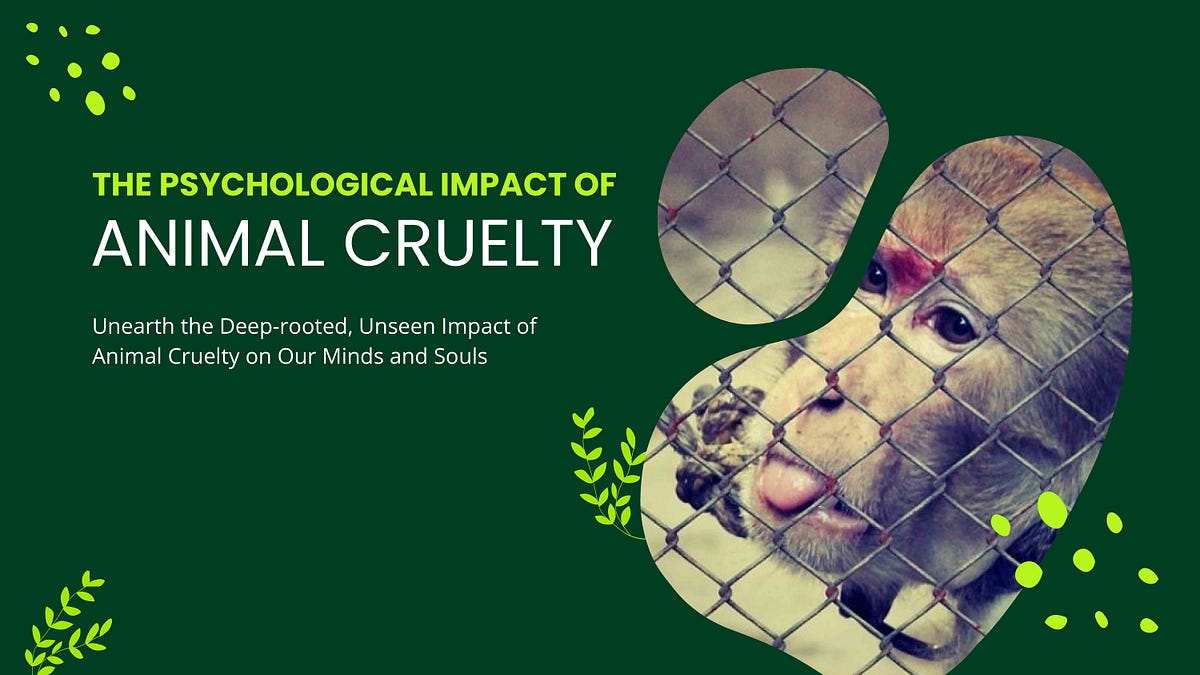In recent years, the relationship between animal cruelty and antisocial behavior has sparked extensive discussions among psychologists, sociologists, and animal rights activists. While conventional wisdom may suggest that those who engage in acts of brutality towards animals are outliers in society, an emerging body of evidence posits a troubling link between animal cruelty and sociopathy. Understanding this connection is crucial, not only for animal welfare advocates but also for the broader field of mental health.
Animal cruelty manifests in various forms, ranging from neglect to overt acts of violence. These actions often reflect a severe lack of empathy, an emotion intricately tied to sociopathic tendencies. Individuals who inflict suffering on animals can be exhibiting early signs of a deeper psychological malaise. As we delve into this complex relationship, it is essential to define sociopathy, examine its psychological underpinnings, and discuss the implications for society at large.
Sociopathy is a term commonly used to describe individuals with Antisocial Personality Disorder (ASPD). These individuals exhibit pervasive patterns of disregard for the rights of others, coupled with a profound inability to empathize. They often charm or manipulate those around them, yet lack the emotional capacities that underpin healthy interpersonal relationships. An alarming trait of many sociopaths is their propensity to harm those who are vulnerable, a category in which animals undoubtedly fall.
One aspect of this phenomenon is the theory of the “triad,” often referred to as the Macdonald triad. Developed by psychiatrist John Macdonald in 1963, it posits that three behaviors in childhood—animal cruelty, fire-setting, and bedwetting—are indicators of later violent behavior in adulthood. Those who engage in cruelty towards animals often do so for a variety of reasons, including exerting power, seeking control, or expressing pent-up rage. This behavior can be seen as a precursor to more severe forms of violence, not just towards animals, but also towards humans.
Investigating the psychological motivations behind animal cruelty necessitates a closer look at the emotional and cognitive frameworks of perpetrators. Unlike situational acts of cruelty, which may be a response to specific triggers or circumstances, sociopathic cruelty towards animals is typically characterized by a cold, calculated nature. Sociopaths may choose to harm animals as a means of exerting dominance or demonstrating control, often devoid of remorse or guilt. This lack of emotional reaction is indicative of a deeply flawed moral compass, compelling them to derive pleasure from the suffering they inflict.
Moreover, sociopathy encompasses a range of emotional deficits. Many individuals with this disorder experience profound difficulties in recognizing or responding to the emotions of others. They may perceive animals merely as objects, devoid of feelings or rights. This dehumanizing perspective can facilitate cruel behavior, as sociopaths view their actions as inconsequential. It raises critical ethical questions regarding moral responsibility and the treatment of beings incapable of defending themselves.
The societal ramifications of animal cruelty as a potential marker of sociopathy are significant. Recognizing that such behaviors may foreshadow more extensive antisocial tendencies might allow for earlier interventions. Treatment programs focusing on empathy cultivation, impulse control, and emotional regulation could potentially mitigate the trajectory towards escalated violence—both towards animals and, ultimately, humans.
Therefore, it is vital to consider preventive measures that extend beyond mere punishment. Mental health initiatives aimed at promoting empathy and compassion from an early age could help combat the underlying factors contributing to sociopathic behavior. Community outreach programs focusing on humane education can foster respect for animal life, thereby reducing instances of cruelty. Young individuals can be taught to engage with animals in nurturing ways, laying the groundwork for a more compassionate society.
Educational institutions also have a critical role to play. Incorporating discussions of animal welfare into curricula could sensitize children to the needs and rights of animals. By fostering a culture of empathy and kindness, schools can potentially mitigate the risks associated with the development of sociopathic tendencies. Comprehensive understanding and dialogue surrounding animal treatment can lead to behavioral changes that favor empathy over cruelty.
In conclusion, while not all individuals who harm animals are sociopaths, the connection between animal cruelty and sociopathy is a salient one. The exploration of this relationship reveals troubling insights into the human psyche. By acknowledging these links, society can act thoughtfully to prevent cruelty and address the mental health challenges faced by those who inflict suffering. A proactive approach rooted in compassion and education can yield benefits not only for animals but for the entirety of society. It is imperative that we cultivate a future where empathy prevails over cruelty and where every living being is afforded dignity and respect.








